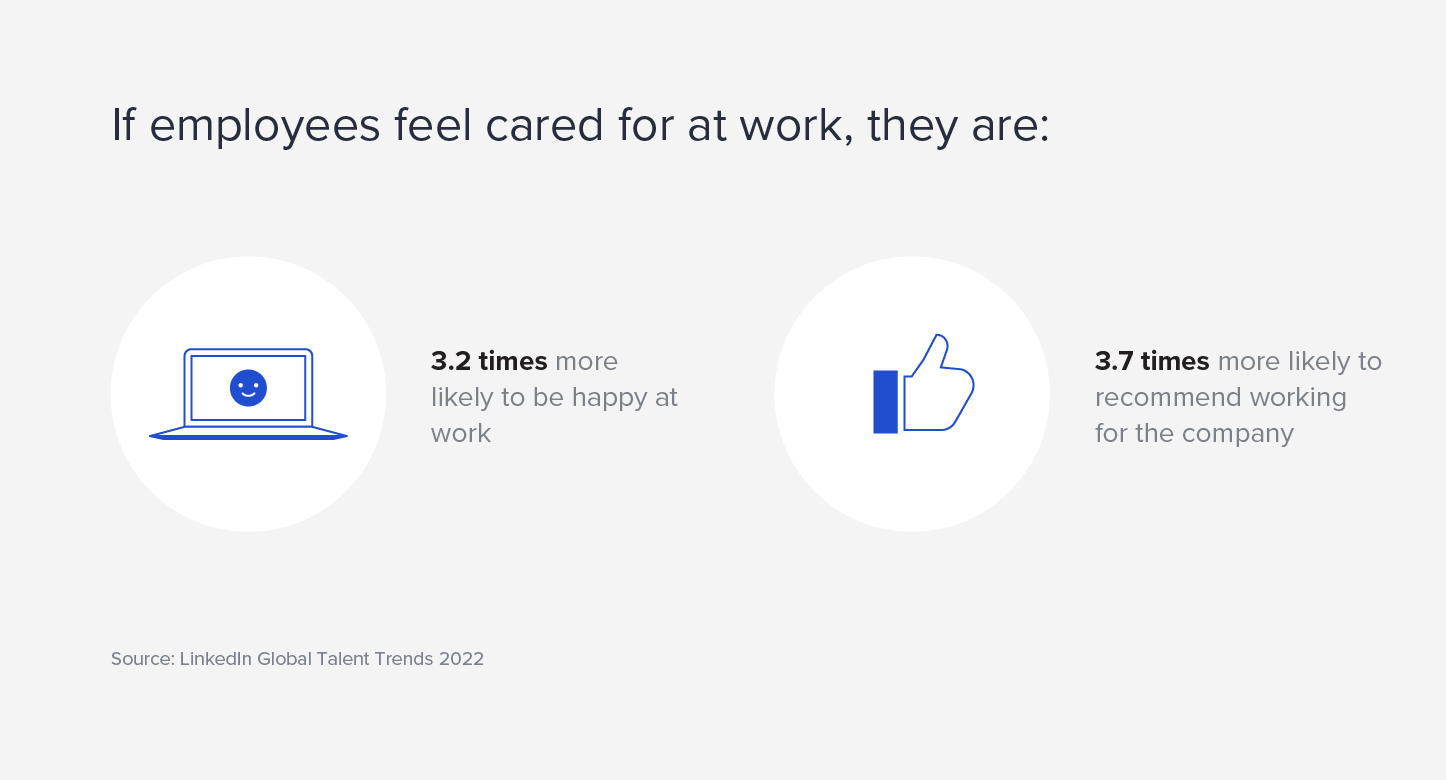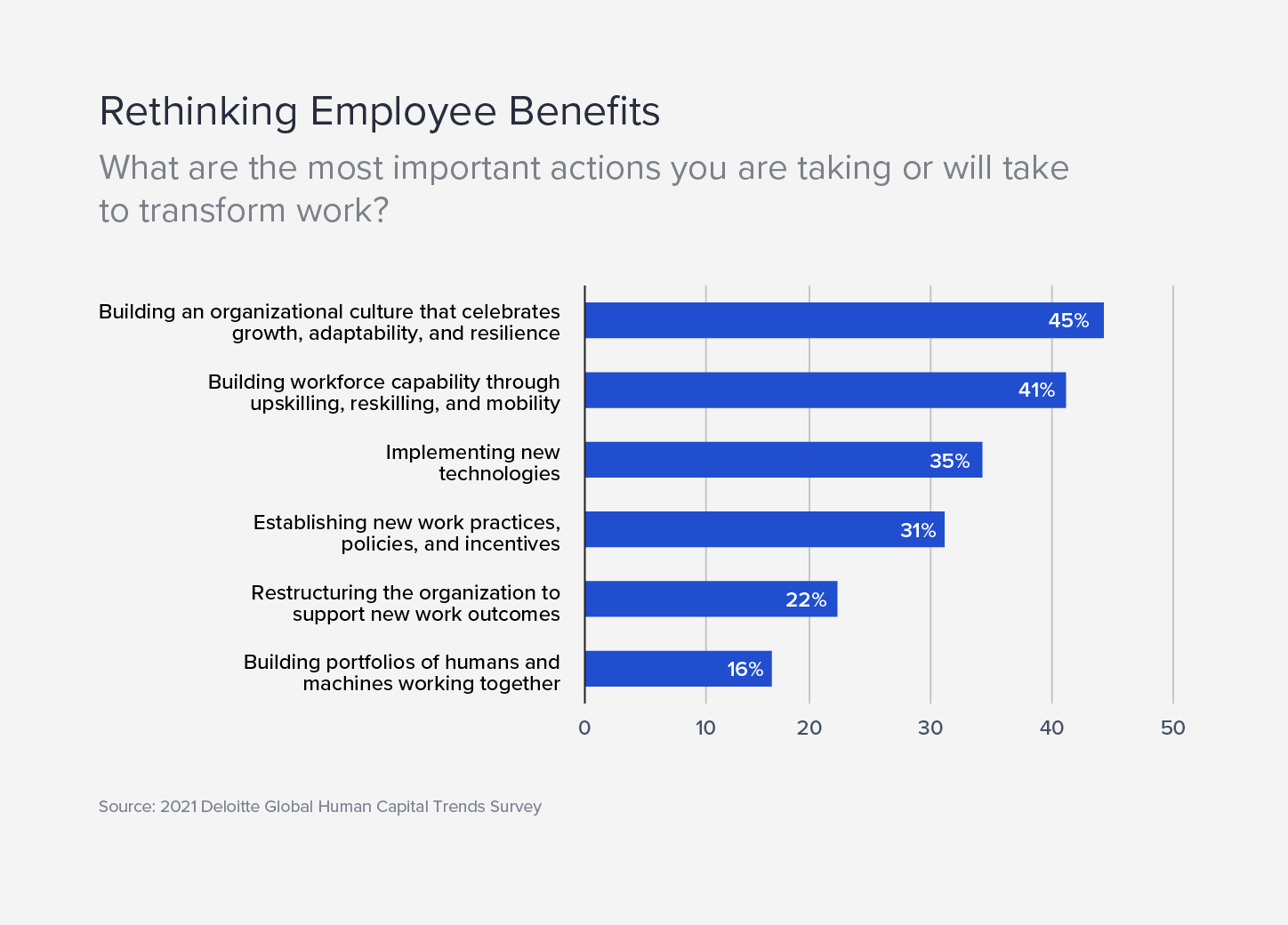How the AT&T Work Culture Can Attract, Hire, and Retain Top Talent
authors are vetted experts in their fields and write on topics in which they are extremely knowledgeable. All of our content is peer reviewed and validated by world-class professionals.

Around the time of its acquisition of Time Warner in 2018, the AT&T culture examined by conducting employee focus groups, surveys, and interviews to gain an honest evaluation of the company’s strengths and weaknesses.
In the midst of this introspection, a new CEO was named, and a global pandemic arrived. Employees were shaken, thrust into a new world of working from home with no assurances about the future. So AT&T took action. Using its employees’ insights as a foundation, the company launched a cultural transformation in summer 2020.
The move proved prescient. In 2021, a report by Deloitte found that 45% of leaders identified building a healthy organizational culture as the most important action to transform work. Unsurprisingly, the absence of a healthy culture can be devastating to a company: Toxic corporate culture was the primary cause of employees leaving an organization as of January 2022, and it is 10 times more likely than compensation to contribute to workforce attrition, according to MIT Sloan Management Review.
AT&T’s Cultural Redefinition
According to Angela Santone, AT&T’s Senior Executive Vice President of Human Resources, company culture is tightly connected to the business’ purpose. To fulfill its mission of putting customers first, the AT&T culture is honed upon caring for the employees who serve those customers.
“I firmly believe you should grow and cultivate culture. It’s not something you can mandate or enforce,” Santone, who oversees the company's global human resources strategy for more than 200,000 employees across four business units, tells Staffing.com.
Jennifer Chatman, Associate Dean at the University of California, Berkeley’s Haas School of Business, agrees. It’s essential for HR executives to reevaluate their strategies, reconsider what they offer employees, and focus on ways to create more appealing work environments, she tells Staffing.com. An effective organizational culture is not only strong and supportive of behaviors that drive strategy, but it is adaptive over time, she says.

AT&T’s intensive employee research resulted in the following cultural tenets:
Serve Customers First
When making hiring decisions, AT&T looks for employees who have a passion for serving customers—and then gives them ample opportunity to do so. “Our employees were saying, ‘Empower us. Give us the opportunity to serve our customers and take care of their issues.’ And we’ve done that,” says Santone. She cites an increase in NPS (net promoter scores, which measure the quality of the customer experience) as evidence that their efforts to procure top talent staffing are making a difference.
Be Bold
Employees are encouraged to speak their minds and share their opinions. This tenet “is all about candor and respect,” says Santone. “We want people to be bold and share which things are going well and where we have opportunities,” she says, citing an internal performance management system that allows employees to recognize their colleagues’ efforts, collaborative teamwork and cost-saving initiatives, and offer ideas.
Move Fast
Simplifying day-to-day work enables individuals to serve the customers first, rather than spending time and energy on unnecessary tasks.
In early 2021, AT&T launched an initiative called Project Raindrops to speed up processes by removing unnecessary steps, pre-approvals, and administrative functions. “On their own, these actions and processes may seem small—like raindrops,” says Santone. “But taken together, they can create a flood of extra work and take time away from more productive activities.”
The time-saving improvements include:
- Automating building access for employees by reducing supervisor approvals for assigned buildings and enhanced security areas; automating annual validations.
- Eliminating travel request and receipt requirements for expense reporting.
- Eliminating supervisor weekly timesheet approvals for non-exempt employees.
- Eliminating photo ID supervisor approvals and shipping account requirements.
Since Project Raindrops began, AT&T has eliminated 20 unnecessary processes and made partial improvements to 64 other “raindrops,” giving an estimated 1.7 million hours back to employees to spend on more important and fulfilling endeavors.
Win as One
Putting the broader company ahead of any personal agendas allows all employees to come together as a team, collaborate, and achieve goals, benefiting both the company's talent and culture. Santone recalls an incident on Christmas Day in 2020, when a bomb exploded near an AT&T building in Nashville, Tennessee. AT&T employees around the country sprung to action to help customers and first responders. “It’s a perfect example of individuals focusing on the greater good,” she tells Staffing.com. “Those are the moments that make me so proud of this company and our employees.”
The AT&T Retention Strategy
A proponent of paying it forward, Santone believes it's important to let people know that the company has their back. “Some of the benefits we launched send the message that we are here for our employees, and not just while they're at work,” she says.
Steve Hatfield, Global Future of Work Leader at Deloitte, agrees. “The best way to drive organizational performance is through the strength of the culture,” he tells Staffing.com. “Initiatives around issues of well-being, inclusion, leadership, and purpose will be extra-motivating for people. That's the secret to accelerated performance in the future.”
Some of AT&T’s newer benefits focus on meeting employees where they are in their lives, and are central to attracting, hiring, and retaining top talent:
- Support for different work models (on-site, hybrid, and remote)
- Caregiver leave: 15 days of paid leave to take care of loved ones/family members
- Online counseling and mental health support via meQuilibrium
- Access to tech and equipment to work from home efficiently
- Programs like Hinge Health for physical health and safety
- Support for victims of domestic/sexual abuse
- Coverage for fertility treatment and adoption leave
- Retirement savings or college loan payments
- College tuition reimbursement worth up to $5,250 annually
- Mentoring sessions through Women of AT&T

Successfully Blending Workplace Cultures
AT&T has been part of several large, high-profile mergers during the past few years, including the aforementioned acquisition of Time Warner. (WarnerMedia was spun off to Discovery in April 2022.) To successfully merge workplace cultures, Santone says it’s important to stay focused on the company's cultural tenets detailed above, while also focusing on the “three Cs.”
- Communication: Ensure that everyone has a shared understanding of the desired behaviors by communicating expectations.
- Clarity: Have clarity around what it means to your organization to uphold its cultural principles and how they help move your organization forward.
- Consistency: Talk about your culture regularly, and share success stories continually.
Organizations that have handled mergers the best have been “very deliberate and intentional about the cultural attributes they want to value” post-merger, Deloitte's Hatfield says.
Leading AT&T's Healthy and Inclusive Workplace Culture
Hatfield says workers have more agency and power than ever, and this calls for a different type of leadership. “Leaders need to be more authentic and empathic to generate the culture they're looking for. And they need to think about their workforce in terms of not just their productivity, but their performance as humans,” he says.
According to Hatfield, a healthy and inclusive workplace culture:
- Engenders “psychological safety” and allows employees to be their authentic selves.
- Empowers people and doesn’t just define productivity as output.
- Is intentional about making social connections.
- Has leadership with a human-first mindset.
These efforts are paying off. AT&T was among the top-ranked organizations in DiversityInc’s 2021 Top 50 Companies for Diversity, which evaluates criteria such as human capital diversity metrics, leadership accountability, talent programs, workplace practices, supplier diversity, and philanthropy. The AT&T inclusion and diversity programs, as well as the company's desire for transparency, would have likely played a large role in this recognition.
“All of us coming together with our different expertise and perspectives enables us to come up with the best final product,” says Santone. “I think having a kaleidoscope of talent and culture makes for a much more successful and interesting organization.”
Ultimately, a culture where employees feel valued and empowered to be their authentic selves can mean the difference between attrition and attraction.
